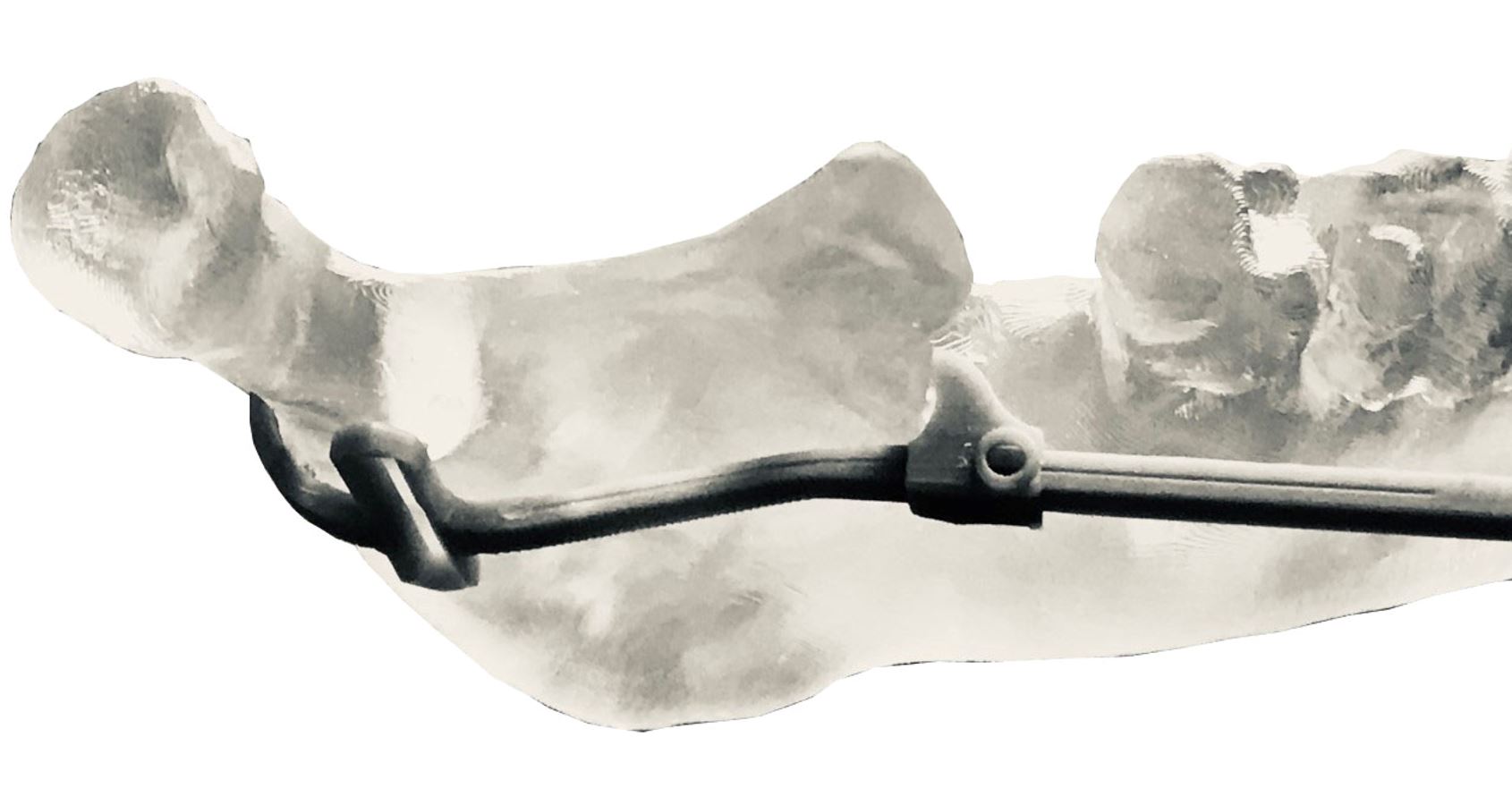Description:
Summary
Vanderbilt researchers have developed a novel surgical guide for intraoral vertical ramus osteotomy (IVRO) that helps to preserve the proximal segment medial pterygoid attachment and avoid injury to the inferior alveolar neurovascular bundle during the procedure.
Addressed Need
While IVRO techniques are useful in many different surgical applications, there are unfortunately three main problems that can arise from a poorly positioned osteotomy cut: open bite, long-term neurosensory deficit of the inferior alveolar nerve, and active bleeding of vasculatures of the medial and/or posterior ramus. This new surgical guide addresses all of these concerns.
Unique Features
- Curvilinear shaft that conforms to the natural curvature of the posterior and lateral mandibular rami
- Osteotomy oriented to the mid-posterior and mid-anterior ramus as anatomical landmarks as opposed to the anti-lingular prominence
- Millimeter markings for intraoperative measurement of the distance between the mid-anterior ramps and the osteotomy cut
- Low-cost, minimally invasive tool that could potentially be disposable
Technology Development / IP Status
Prototypes of the device have been made and are being tested.
A patent has been granted for this device: US-2022-0233202-A1

Figure 1: The curvilinear shaft, cutting slot, curved claw, and sliding hook pictured here allow the device to conform to the anatomical features of the jaw bone (clear model shown), providing for an improved osteotomy cut.